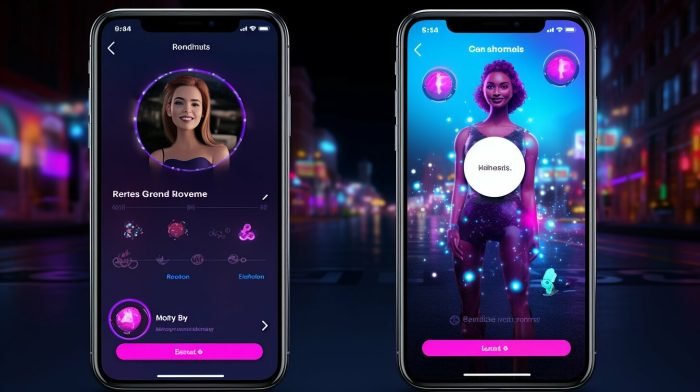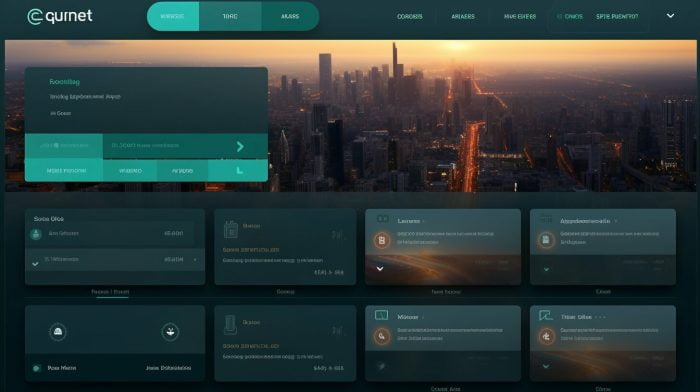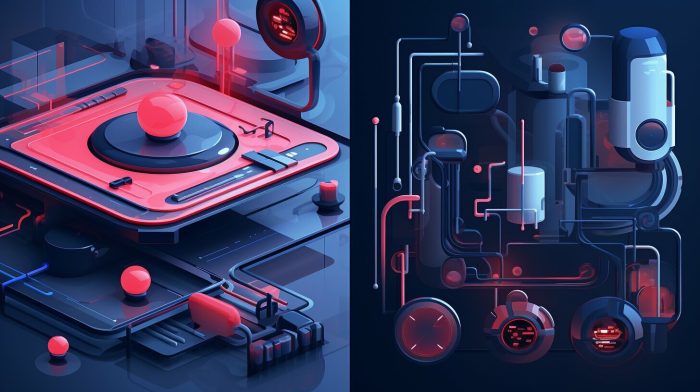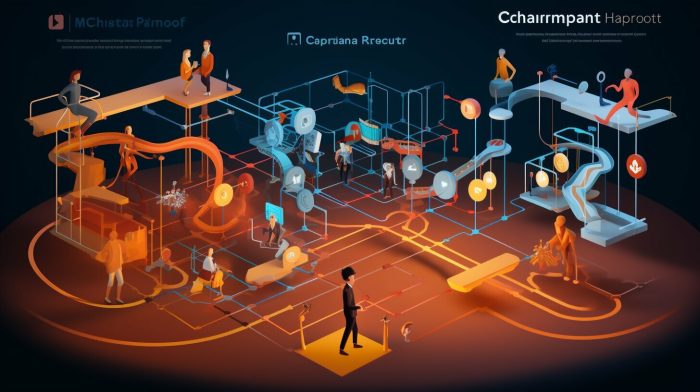ChatGPT vs Open AI Playground: Which GPT 4 is Better?
Are you torn between choosing ChatGPT or Open AI Playground for your AI needs? Read on to discover which GPT 4 version is the best fit for you.
ChatGPT and OpenAI Playground are two powerful tools that harness the power of artificial intelligence for natural language processing tasks. While both tools offer impressive capabilities, they differ in terms of features, usability, limitations, and cost-effectiveness. In this article, we will delve into a comprehensive comparison of ChatGPT and Open AI Playground to help you make an informed decision.
Key Takeaways:
- ChatGPT and Open AI Playground are both AI-powered tools for natural language processing.
- Open AI Playground is more user-friendly and accessible to non-technical users.
- ChatGPT requires programming skills for integration into applications.
- Open AI Playground offers text generation, translation, question-answering, and chatting capabilities.
- ChatGPT is specifically focused on conversational AI.
- Both tools have limitations such as limited API calls.
- Choosing between the two depends on specific needs, technical expertise, and budget.
Now, let’s dive deeper into the features, usability, limitations, and cost-effectiveness of both ChatGPT and Open AI Playground to help you make an informed decision.
Introduction to ChatGPT and Open AI Playground
To fully understand the differences between ChatGPT and Open AI Playground, let’s explore these two AI tools in detail. ChatGPT, developed by OpenAI, is a conversational AI model that generates human-like text responses. It is designed to assist in chatbot or AI assistant development by providing natural language processing capabilities.
On the other hand, Open AI Playground is a web-based platform that allows users to experiment with various AI models, including GPT. It provides a user-friendly interface, making it accessible to non-technical users. Open AI Playground offers features such as text generation, translation, question-answering, and engaging in conversations.

Now that we have an overview of ChatGPT and Open AI Playground, let’s dive deeper into their features, capabilities, usability, and limitations to determine which tool is better suited for your specific needs.
Features and Capabilities of ChatGPT
ChatGPT boasts a wide range of features and capabilities that cater to various AI applications. As a powerful language model, it can generate text that closely resembles human-like responses, making it ideal for chatbot or AI assistant development. Its ability to understand and respond to user input in a conversational manner enhances the user experience and allows for more interactive interactions.
One notable feature of ChatGPT is its support for plugins, which allows users to extend its functionality according to their specific needs. Whether it’s adding new conversational skills or integrating external APIs, ChatGPT’s plugin system provides flexibility and customization options to create tailored AI experiences.
Furthermore, ChatGPT’s language model is trained on a vast amount of text data, enabling it to generate responses for a wide range of topics and use cases. Its training data includes online articles, books, and other publicly available text sources, ensuring that it can provide relevant and contextually appropriate responses.
To visualize the features and capabilities of ChatGPT, refer to the table below:
| Features | Capabilities |
|---|---|
| Conversational AI | Generate human-like text responses |
| Plugin Support | Extend functionality with custom plugins |
| Wide-ranging Training Data | Provides responses for various topics and use cases |
With its impressive features and capabilities, ChatGPT offers developers and users a powerful tool for creating conversational AI experiences. Its ability to generate text that resembles human-like responses, combined with plugin support and extensive training data, makes it a valuable asset in the field of natural language processing.

Open AI Playground is a versatile tool that provides several features and capabilities to support AI applications. Its user-friendly interface makes it accessible to non-technical users, allowing them to experiment with various AI models without the need for programming skills. The platform offers a range of functionalities, including text generation, translation, question-answering, and chatting capabilities.
With Open AI Playground, users can easily generate text that closely resembles human-like responses. This makes it suitable for tasks such as creating chatbots or developing AI assistants. The platform also allows users to translate languages and provides a question-answering feature, enabling them to obtain relevant information quickly and efficiently.
Open AI Playground strives to provide a seamless experience for its users. Its intuitive interface makes it easy to navigate and experiment with different AI models. The platform encourages the AI community to explore and innovate by offering a user-friendly environment for building and testing AI applications.

In summary, Open AI Playground offers a user-friendly interface and a wide range of features and capabilities to support AI applications. Its text generation, translation, question-answering, and chatting functionalities make it a powerful tool for developers and non-technical users alike. Whether you are looking to create a chatbot, translate text, or find answers to specific questions, Open AI Playground provides the necessary tools to accomplish your tasks.
Usability and Accessibility of ChatGPT
ChatGPT offers a user-friendly interface but requires programming skills for integration. Its interface is relatively simpler compared to other AI models, making it more accessible to non-technical users. This means that individuals without extensive coding knowledge can still interact with the model and enjoy its capabilities. However, it’s important to note that users with specific customization or fine-tuning requirements may face limitations when using ChatGPT. While the tool provides a straightforward user experience, it may not cater to the needs of those who require advanced customization options.
Users who possess the necessary programming skills can seamlessly integrate ChatGPT into their applications and leverage its powerful conversational AI capabilities. The AI model supports plugins, allowing users to enhance and extend its functionality according to their specific needs. This flexibility enables developers to create chatbots or AI assistants that align with their desired outcomes. However, the integration process may require technical expertise, making it less accessible to individuals without programming skills.

In summary, ChatGPT offers a user-friendly interface that allows non-technical users to interact with the model. However, programming skills are essential for integrating the tool into applications and taking full advantage of its capabilities. With the support for plugins, ChatGPT provides developers with the opportunity to customize and extend its functionality, enabling them to create tailored conversational AI solutions.
Usability and Accessibility of Open AI Playground
Open AI Playground is a user-friendly platform that caters to non-technical users and provides extensive customization options. Its web-based interface makes it accessible to anyone interested in experimenting with AI models without requiring any programming knowledge. This accessibility allows individuals from various backgrounds to explore the possibilities of artificial intelligence.
The platform offers a range of features, including text generation, translation, question-answering, and chatting capabilities. Non-technical users can easily navigate through the interface and interact with AI models in a seamless manner. Open AI Playground’s intuitive design and straightforward user experience make it an ideal choice for those who want to harness the power of AI without the need for complex technical skills.
Furthermore, Open AI Playground‘s extensive customization options allow users to personalize their AI experience according to their specific requirements. Users can adjust various parameters, explore different models, and fine-tune the AI’s performance to suit their needs. This level of customization empowers users to create AI solutions that align with their unique goals and preferences.

Overall, Open AI Playground provides non-technical users with a user-friendly platform to explore the potentials of AI. Its accessibility and customization options make it an excellent choice for individuals seeking to leverage AI capabilities without extensive programming expertise. With Open AI Playground, users can easily interact with AI models, customize their AI experiences, and unleash the power of artificial intelligence.
Open AI Playground Usability Summary:
- Accessible and user-friendly web-based platform
- No programming knowledge required to use
- Intuitive interface for seamless user experience
- Extensive customization options for tailored AI experience
| Pros | Cons |
|---|---|
| Easy to use for non-technical users | Requires internet access |
| Provides extensive customization options | Limited availability of certain features to light users |
| Offers a variety of AI applications |
Limitations of ChatGPT and Open AI Playground
While ChatGPT and Open AI Playground are powerful tools, they come with their own set of limitations. Understanding these limitations is crucial for users to make an informed decision about which tool best suits their needs.
ChatGPT Limitations
ChatGPT has a limited number of API calls per month, which means heavy users may face restrictions on their usage. This limitation can be a drawback for those who require frequent and extensive access to the API. Additionally, users may experience occasional issues with the model generating repetitive or inappropriate responses. This can be attributed to the limitations in the training data used to develop ChatGPT.
Open AI Playground Limitations
Open AI Playground, despite its user-friendly interface, has its own limitations. One major drawback is the lack of internet access within the playground. This means users cannot access external resources or websites while using the platform. Another limitation is that certain features within Open AI Playground may only be available to light users, limiting access to more advanced capabilities for heavier users.
It is important for users to consider these limitations and evaluate whether they align with their specific requirements. Some users may find these limitations negligible, while others may find them significant enough to influence their choice of tool.

| ChatGPT Limitations | Open AI Playground Limitations |
|---|---|
| – Limited API calls per month | – Lack of internet access |
| – Occasional repetitive or inappropriate responses | – Limited availability of certain features to light users |
By considering these limitations and weighing them against the strengths and features of each tool, users can make an informed decision that aligns with their specific needs and objectives.
Cost-Effectiveness of ChatGPT and Open AI Playground
Let’s dive into the cost aspect of ChatGPT and Open AI Playground to help you determine the most suitable option for your budget. Both tools offer unique features and capabilities, but understanding their cost-effectiveness is crucial in making an informed decision for your AI project.
ChatGPT
ChatGPT is generally more affordable for average users, making it a cost-effective choice. With its pricing structure, you pay per token for API usage, and the number of tokens used depends on the length and complexity of the generated response. However, it’s important to note that ChatGPT has a limited number of API calls per month. If you have heavy usage requirements, this limitation might affect the cost-effectiveness of ChatGPT for your specific needs.
Open AI Playground
Open AI Playground offers a different cost structure that may be more cost-effective for light users. It provides free access to the platform, allowing users to experiment with different AI models without incurring any costs. However, it’s worth mentioning that Open AI Playground may not be cost-effective for users who require extensive API usage or specific customizability options offered by ChatGPT.

In conclusion, when considering the cost-effectiveness of ChatGPT and Open AI Playground, it’s important to assess your specific needs, usage requirements, and budget. ChatGPT offers affordability for average users, while Open AI Playground may be more cost-effective for light users. Understanding the pricing structure and limitations of both tools will help you make the best decision for your AI project.
Comparing ChatGPT and Open AI Playground Interface
Interface plays a crucial role in deciding between ChatGPT and Open AI Playground. Let’s compare their interfaces to understand which one aligns better with your requirements.
ChatGPT offers a simpler interface, making it easy for users to get started without much technical knowledge. The user-friendly design allows for a smooth navigation experience, ensuring that users can quickly access the features they need. The straightforward layout makes it suitable for both beginners and experienced users looking for a hassle-free experience.
On the other hand, Open AI Playground takes interface customization to the next level. It offers a range of customization options, allowing users to personalize their AI experience according to their preferences. The platform’s intuitive interface empowers users to experiment with different AI models and explore the vast possibilities of natural language processing. Open AI Playground’s interface is designed to cater to the needs of users who require more flexibility and control over their AI interactions.
Ultimately, the choice between ChatGPT and Open AI Playground depends on your preferences and needs. If you prefer a straightforward and user-friendly interface, ChatGPT is the perfect choice. However, if you value customization options and want to have more control over your AI experiments, Open AI Playground is the ideal platform.
Comparison of ChatGPT and Open AI Playground Interface
| ChatGPT Interface | Open AI Playground Interface |
|---|---|
| Simple and user-friendly | Highly customizable |
| Straightforward navigation | Intuitive design |
| Ideal for beginners | Offers flexibility for advanced users |
Whether you choose ChatGPT or Open AI Playground, both tools provide powerful capabilities for natural language processing tasks. Consider your comfort with an interface and your requirement for customization to make the best choice for your AI projects.

Training Data and Generated Responses of ChatGPT and Open AI Playground
The training data and generated responses of ChatGPT and Open AI Playground are crucial factors to consider when comparing these two AI tools. ChatGPT, developed by OpenAI, is trained on a wide range of text data, allowing it to generate responses for various use cases. Its training data includes a diverse collection of internet text, allowing the model to learn from a vast amount of information.
Open AI Playground also leverages extensive training data to enable its AI models, including GPT, to generate responses. The platform’s training data comes from a variety of sources, ensuring its models have exposure to diverse text inputs. This helps enhance the models’ language understanding and capability to generate coherent and contextually relevant responses.
Both ChatGPT and Open AI Playground aim to generate human-like text. However, due to the limitations of training data, there may be instances where ChatGPT produces repetitive or inappropriate responses. Open AI Playground strives to mitigate such issues through continuous improvements in its training data and model fine-tuning processes.

When it comes to comparing the generated responses of ChatGPT and Open AI Playground, it’s important to note that both tools have their own strengths and nuances. ChatGPT is designed to excel in conversational AI and can produce text that closely resembles human-like responses.
Open AI Playground, on the other hand, offers a range of AI capabilities beyond just chat, such as translation, question-answering, and more. The diverse training data and models used by Open AI Playground contribute to its ability to generate contextually relevant responses across various domains.
In conclusion, both ChatGPT and Open AI Playground have undergone extensive training on large datasets, enabling them to generate responses that are increasingly indistinguishable from human-generated text. The continuous advancements in training data and model fine-tuning contribute to their learning abilities and enhanced language generation capabilities.
FAQ
Q: What are ChatGPT and Open AI Playground?
A: ChatGPT and Open AI Playground are tools that leverage the power of artificial intelligence for natural language processing tasks. ChatGPT is a conversational AI model developed by OpenAI, while Open AI Playground is a web-based platform that allows users to experiment with different AI models, including GPT, in a user-friendly interface.
Q: What features and capabilities does ChatGPT offer?
A: ChatGPT offers the ability to generate human-like text, making it suitable for chatbot or AI assistant development. It also supports plugins, allowing users to extend its functionality for specific needs.
Q: What features and capabilities does Open AI Playground offer?
A: Open AI Playground allows users to generate text, translate languages, answer questions, and engage in conversations. Its web-based platform provides a user-friendly experience and supports various AI applications.
Q: Is ChatGPT more accessible to non-technical users?
A: ChatGPT requires programming skills for integration, but its interface is relatively simpler, making it more accessible to non-technical users.
Q: Is Open AI Playground more accessible to non-technical users?
A: Yes, Open AI Playground is designed to be more accessible to non-technical users. Its web-based platform provides a user-friendly experience, allowing users to experiment with AI models without any programming knowledge.
Q: What are the limitations of ChatGPT and Open AI Playground?
A: ChatGPT has a limited number of API calls per month, which may restrict heavy usage. Open AI Playground has limitations such as the lack of internet access and limited availability of certain features for light users.
Q: Which tool is more cost-effective for average users?
A: ChatGPT is generally more affordable for average users, considering its limited API calls per month.
Q: Which tool offers a simpler interface?
A: ChatGPT has a simpler interface compared to Open AI Playground.
Q: What is the difference in training data and generated responses between ChatGPT and Open AI Playground?
A: Both tools are trained on a wide range of text data. However, ChatGPT may generate repetitive or inappropriate responses at times due to limitations in training data.
Q: How do I choose between ChatGPT and Open AI Playground?
A: The choice depends on your specific needs, technical expertise, and budget. Factors such as usability, customization options, limitations, and cost-effectiveness should be considered.
Q: Are there any final thoughts on ChatGPT and Open AI Playground?
A: Both tools are powerful and offer different strengths. ChatGPT is more focused on conversational AI, while Open AI Playground provides a broader range of AI models. Assessing your specific needs will help you make the best decision for your AI project.
Conclusion: Choosing between ChatGPT and Open AI Playground
After thorough comparison, it’s time to draw a conclusion and determine whether ChatGPT or Open AI Playground is the best fit for your AI requirements.
Both ChatGPT and Open AI Playground are powerful tools that leverage AI technology for various applications. ChatGPT is specifically designed for conversational AI, making it ideal for creating chatbots or AI assistants. On the other hand, Open AI Playground offers a broader range of AI models and features, such as text generation, translation, question-answering, and chatting capabilities.
When it comes to usability, ChatGPT requires programming skills for integration into applications. However, its interface is relatively simpler and more accessible to non-technical users. Open AI Playground, on the other hand, is designed to be user-friendly and requires no programming knowledge.
In terms of cost-effectiveness, ChatGPT is generally more affordable for average users, especially considering the limited number of API calls per month. On the other hand, Open AI Playground may be more cost-effective for light users who don’t require extensive API usage.
Ultimately, the decision between ChatGPT and Open AI Playground will depend on your specific needs, technical expertise, and budget. Consider factors such as usability, customization options, limitations, and cost-effectiveness to make the best decision for your AI project.

Conclusion:ChatGPT vs Open AI Playground Which GPT 4 is Better
To wrap up, ChatGPT and Open AI Playground are both impressive tools that excel in different aspects of AI, making the final decision dependent on your individual requirements. ChatGPT is a powerful conversational AI model developed by OpenAI, ideal for chatbot and AI assistant development. It generates human-like text responses and supports plugin integration for added functionality. However, it requires programming skills to integrate into applications.
On the other hand, Open AI Playground offers a user-friendly platform that allows users to experiment with various AI models, including GPT. It provides features like text generation, translation, question-answering, and engaging conversations. With its intuitive interface, Open AI Playground is more accessible to non-technical users who do not possess advanced programming skills.
When it comes to cost-effectiveness, ChatGPT is generally more affordable for average users, especially considering the limited number of API calls per month. On the other hand, Open AI Playground may be more cost-effective for light users who do not require extensive API usage. The pricing options for both tools should be considered when making your decision.
Ultimately, your choice between ChatGPT and Open AI Playground will depend on factors such as ease of use, customization options, limitations, and budget. Assessing your specific needs and technical expertise is key to selecting the tool that aligns best with your AI project goals. Both tools have their unique strengths and limitations, so take the time to evaluate which tool suits your requirements and objectives.